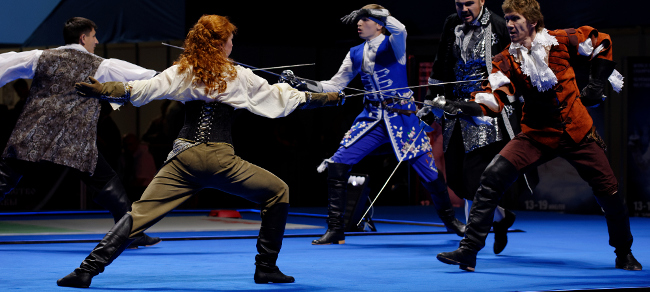The Heart of Storytelling
Posted on 13 February 2017
The problem with storytelling as conflict
A popular dictum found in English classes and books about creative writing goess “Storytelling is about conflict.”
Even worse is the corollary: the bigger the conflict, the better the story. This is largely a Hollywood formulation that has crept into our universal understanding of stories. It has more to do with cultural priorities and toxic masculinity (bigger is always better) than a genuine core to narrative.
Conflict certainly helps to sell blockbuster films. This solidifies its place in a dogma of storytelling that is more about status and domination than experiencing and understanding the world both within and without.
What is most telling is if we go back to the original formulations of narrative conflict as taught in English classes. I remember being taught these in high school. I have books that list these formulations, but do not cite their source. The oldest work I have of my own is A Handbook To Literature (fourth edition) by C. Hugh Holman published in 1980. Conflict was said to come in the below flavours.
- Man vs himself
- Man vs man
- Man vs nature
- Man vs society
- Man vs God/Fate
The first most obvious cultural imperative in this list is the primacy of males in narrative. If you check for Conflict (narrative) in Wikipedia it also uses the word “man” rather than “person” or “character”. The second imperative is the necessity of a win/lose formulation that comes with the word “vs”. Finally, this list frequently no longer includes “God” in modern texts, or combines it as “fate” with “nature”. Recently, “Man vs Machine” has been added to some lists. These are strongly indicative of the cultural nature of this list, given such shifts can occur.
Modern revision
In the past I have reformulated this list and included it in my own lecturing. My list looked like this:
- Character vs themselves
- Character vs character(s)
- Character vs nature
I remove the sexist language. I remove character vs society. A person never reallly fights society per se—they fight individuals within social structures in order to create change among a wider circle of people. Besides, the more you personalise a story, the more emotionally effective it becomes. Character vs God/Fate can be subsumed by either “character vs character” or “character vs nature”. However, I’m not even convinced by the separate designation of “character vs nature”.
If in Moby Dick Ahab’s relationship with the whale was a personal one, where the whale was consciously participating in the conflict, it was “character vs character”. If the whale had no intrinsic motivation for interacting with Ahab other than a simple predator/prey arrangement, then the conflict itself is more inside Ahab’s head, making this a “character vs themselves” scenario. A mountain, rock, tree, or animal with little to no conscious engagement can be dangerous, an obstacle, and a challenge but there is no conflict.
This leaves us with “character vs themselves” and “character vs character” as the only legitimate conflicts. For me this is indicative of where the true heart of storytelling lays: relationship.
Narrative and Relationship
Relationships will certainly include conflict upon occasion. Because we are all unique, we are all constantly negotiating with other people in order to get our wants and needs met. Sometimes these negotiations break down into conflict. To see all such negotiations as win/lose conflicts leads to a narrative of paranoia which is reflective of a need for control through dominance.
I will stand by the formulation that a story must have a beginning, a middle, and an end as per Aristotle in Poetics. A literary work of art can do away with this formula for dramatic structure, but it is no longer a story: perhaps a prose poem. As such storytelling represents human life in process through characters relationships with themselves and one another. The chief component of this process is problem-solving. The greater the challenge to overcome with this problem-solving, the more dramatic the story. Yet, even stories with smaller challenges can be made engaging (ie slice of life stories such as Mon Oncle by Jacques Tati). Conflict can certainly be a component of problem-solving, eg a problem is resolved when one character hits the other one over the head.
To make conflict central to the vast majority of stories is to teach ourselves and our children that we live in a dangerous world where relationship is usually conflict. We even romanticise the notion of domination. It’s seen as a good thing to beat up an enemy in order to prove worthiness and win your very own princess—surely we have outgrown this.
If we want to live in a peaceful world, we need to rediscover the heart of storytelling. We need to tell a broader range of stories that help us to heal and to grow as a culture. Change our stories and we can change the world!
Peace and kindness,
Katherine
image: 2015 July 14 CC BY 3.0 Marie-Lan Nguyen
Responses are closed for this post.

